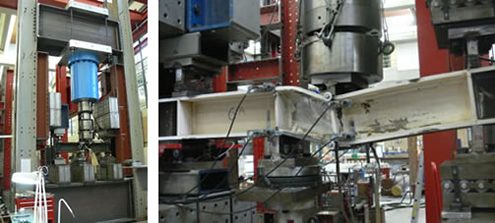Behaviour of high strength steel web shear panels
Beam-column moment-resisting joints in steel-framed structures consist of a web panel and one or two connections (single- or double-sided joint configuration). The web panel zone is the region within the column web and flanges into which the beams are framed. The connection is the location where two members are interconnected and the means of interconnection, i.e. the set of physical components that mechanically fasten the connected elements. Recent interest in high performance construction materials again draws attention to issues related to the panel zone behaviour. This research work focus on the behavioural analysis of web panels made up of high strength steel (HSS) S690 and S960. The researchers attempt to provide answers to the following questions:
- Are the existing shear deformation models accurate for HSS panels?
- Which models best describe this behaviour?
- How does the yield stress influence the failure mechanism of web shear panels?
- What is the influence of an axial force in the column over the HSS panel zone?
- Can the design of HSS web shear panels be based on a plastic concept?
- Are the design criteria for the panel zone given in Eurocode 3, part 1.8 still applicable to HSS grades (above 460MPa) or should they be modified in some instances?
- Do HSS panels behave ductile?
To answer these questions, full scale tests are conducted and complemented with numerical work.

Publications
Girão Coelho, A.M., Bijlaard, F.S.K., Kolstein, M.H. (2007).
Behaviour of high strength steel web shear panels In Proceedings 5th International Conference on Advances in Steel Structures, Singapore (To be published).